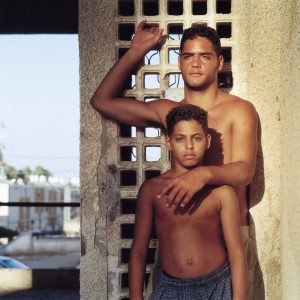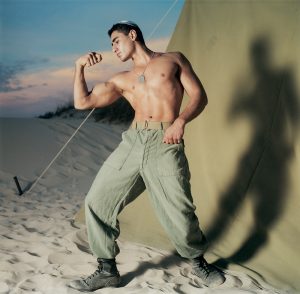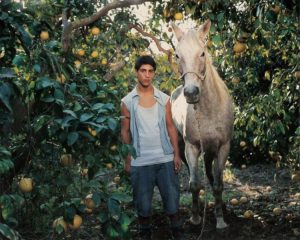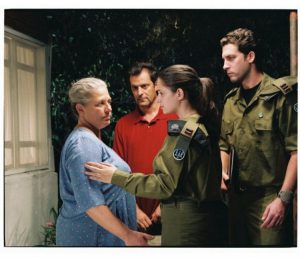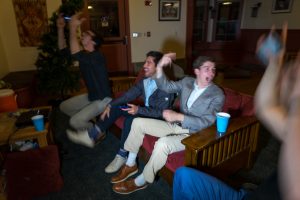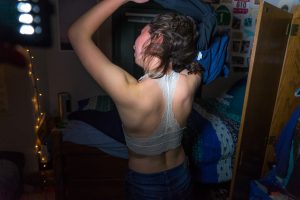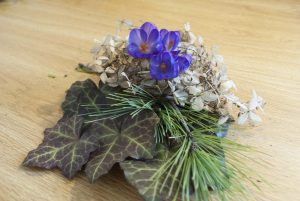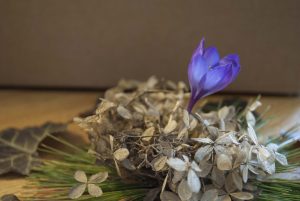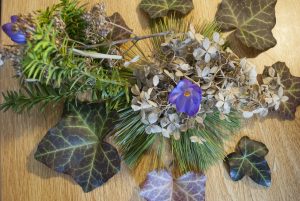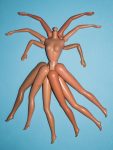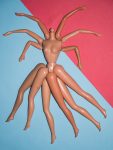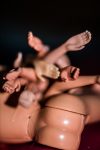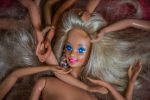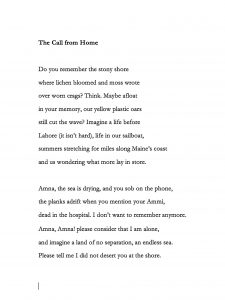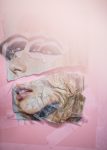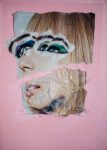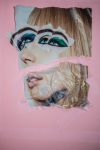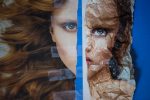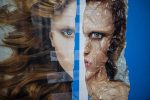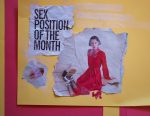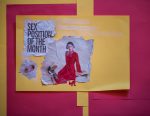Category Archives: 1: color as subject
Hugo Hentoff 7
For my final project I’d like to photograph the residents of senior centers in and near Brunswick. I want to get to know my subjects through the camera, but I also think that that is kind of impossible. I don’t want to pretend to be representing The Truth about life in a senior center or The True essence of my subjects, because I really don’t believe the camera can do that, even if it appears to be doing that. I want the photographs to be intimate and honest, but I also want to constantly remind the viewer that there is someone taking these photos, that this is not “real life captured;” this is a narrative I’m creating. I also don’t want the photographs to be exploitative or use tired tropes of what it means to be old. I want the personalities and humanities of the subjects to inform their representations, even if it just a representation and not the reality. Since I have not been to the senior centers yet there isn’t much more I can plan out because the location and the subjects will dictate exactly how I go about this.
- In Another Country by James Baldwin, the narrator talks about the process of writing a novel. He says that if the characters are only performing actions because the author decided they would do that, the novel is going to be unsuccessful. The characters must move and act on their own accord and the author has to be able to allow them to do that. If the characters are unique individuals, are humans, then they will do more than just move when the author tells them to. I want my final project to be informed by my subjects. I want to create representations based on their humanity, not my idea of what their humanity should look like.
- The Girls season finale represented motherhood and friendship in a way that felt intimate and completely true to the characters. It didn’t remind me of any other shows about motherhood or friendship I had ever seen, and it didn’t feel like it was informed by clichés about what being a mother is. I want to take this same attitude with me, the resistance to falling into tropes, into the senior centers.
- Billie Holiday’s All of Me is a tragic and beautiful and slow song that utilizes repetition and silence to evoke an emotional response in the listener. I want to create photographs that look like what this song sounds like.
- Louie C.K’s stand up specials deal with fatherhood and the experience of aging. It approaches these subjects in a heartfelt and unflinching way. He makes situations that might feel dark or scary funny, not by rejecting or ignoring the darkness, but by repurposing it.
- The Netflix British comedy Chewing Gum takes place in government owned and subsidized apartment building built for low-income residents. These tenements are often represented in popular culture as dark, dirty, and scary, but Chewing Gum makes the active choice to shoot using bright, vibrant colors, completing changing the representation through a solely aesthetic choice.
- George Saunders’s collection of short stories, The Tenth of December, uses stream of consciousness narratives that allow you to really get into the character’s head, even if you don’t want to be in there. I want to explore taking photographs that feel like reading stream of consciousness.
- The HBO series Veep is constantly referenced as the show that most accurately represents the experience of working in government. It does this because instead of focusing on large, dramatic plots, it focuses on the characters and the hilariously horrible things they do. Focusing on the often times cringe-inducing comedy allows Veep to create a representation that feels true to the real experience.
- Elizabeth Stout’s novel Olive Kitteridge centers around the life of a Maine woman whose gruffness and bluntness often leads to her being misunderstood and disliked. The novel explores aging intimately through the perspective of a uniquely recognizable individual, instead of using just what the author imagines aging to be.
Ben Painter 7
Project proposal- I want to explore the relationship between the street photographer and her/his subject. This will allow me to begin a project I will be working on all of next semester with Meghan Parsons and Mike. For this project, I imagine having two photographs go together, one a street photograph, and the other a photograph of the street photograph being made. When I do street photography, I often feel like a hunter, like I am taking something from my subject. It does not feel like a mutual interaction, or even an ethical one. I hope to shed light on my concerns around the practice through this work. For inspiration, I will be looking at texts, movies, and TV shows that explore ideas pertaining to the relationship between photographer, subject, and viewer; visual language of hunting/taking pictures of subjects; and the history/moral considerations of street photography.
Camera Lucida – Roland Barthes’ Camera Lucida deals with themes surrounding the effect of being photographed on the subject. Barthes describes being photographed as a certain form of death. This is a text that every photographer should know well. It is particularly applicable to this project, as it deals with the effect of a photograph on the subject specifically.
The man with a movie camera – Silent russian film released in 1929. One main “character” in this film is a man with a movie camera. I have not seen it yet, but I have been told by a few film buffs that if I am dealing with the relationship between photographer and subject, this is a must watch.
https://www.theguardian.com/film/video/2015/jul/31/man-with-a-movie-camera-video-review
Regarding the Pain of Others – I haven’t read this text yet, but Susan Sontag’s other work that I have read has been hugely influential to me. This work deals with the ethical considerations surrounding photographs of suffering. Will be relevant in thinking about the relationship b/w photographer, subject, and viewer.
Shooter (2007)- Hollywood movie about a sniper. I will use this movies’ visual language around hunting humans in order to think about how I want to depict the “hunting” involved in street photography.
Blowup by Antonioni -”Blowup, or Blow-Up, is a 1966 British-Italian film directed by Michelangelo Antonioni about a fashion photographer, played by David Hemmings, who believes he has unwittingly captured a murder on film” (wiki). Another movie that I have been told is a must watch for what I am exploring.
The Wire- The wire has many scenes where the police take photos of people for evidence. The cinematography of these scenes is particularly interesting. I will be able to draw upon this visual language in my work.
1984- George Orwell’s 1984 is a dystopian novel about the big brother state. This work is key to understanding one aspect of why most people are uncomfortable being photographed in public spaces. Brings up themes of privacy, surveillance, etc. Will be relevant to me as I am actually walking the streets photographing in public.
Nussenzweig v DiCorcia – “Philip-Lorca DiCorcia photographed Hasidic Jew Ermo Nussenzweig walking on a public street in New York without his knowledge or consent. DiCorcia sold 10 prints of the image for between $20,000 – $30,000 through the Pace/McGill gallery. Nussenzweig sued DiCorcia and the gallery for privacy and religious reasons.
The court ruled that the photograph was art, not commerce, and protected by the First Amendment.” (https://petapixel.com/2014/10/28/8-legal-cases-every-photographer-know/)
This court case, and others like it, will help me navigate issues around street photography in general. What do our laws say about the relationship between the street photographer and her/his subject? What does that say about our society?
Construction Rough Drafts
Salam CONSTRUCTION RD
Construction Rough Draft
construction rough rough rough drafts
Appropriation Rough Drafts
- =


